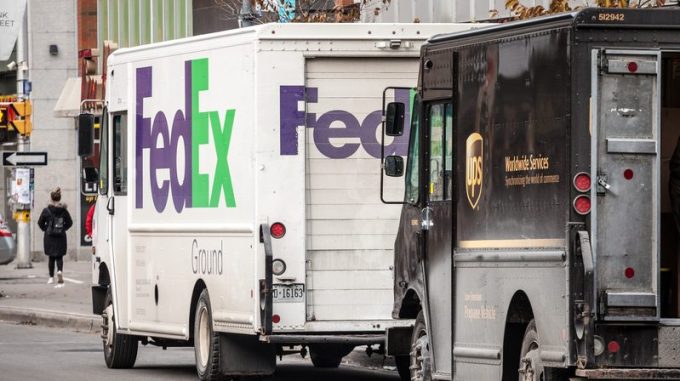The Loadstar leader: Farewell FedEx's Fred Smith, who blazed a trail for so many
FedEx’s Fred Smith was testament to how logistics is a rich and fertile land for ...

As the battle for last-mile supremacy rages on, the question over differences between US government status for FedEx and UPS may likely arise.
FedEx Express’s status is via the Railway Labor Act, while UPS falls within National Labor Relations Act – the differences hinge on how ...
CMA CGM South Korean staff strike over bonuses after bumper 2024 profit
MSC switches two more Asia-Europe port calls from congested Antwerp
CMA airline returns two freighters, while ANA takeover of NCA looms
Front-loading frenzy has made traditional H2 peak season 'unlikely'
Nightmare for Bangladeshi exporters as congestion and tariffs bite
Tradelanes: Export boom in Indian sub-continent triggers rise in airfreight rates
Carriers introduce surcharges as congestion builds at African ports
Mexican airport modernisation plan unlikely to boost cargo facilities

Comment on this article
Jay
February 24, 2020 at 11:38 pmInteresting if you can elaborate on your last statement; “As FedEx grows its ground offerings, it will need to collaborate with its independent contractors – and at what point will these contractors say enough is enough?”
and what do you foresee this means to the independent contractors in the future and the business model Ground uses?
thank you
Cathy Roberson
February 25, 2020 at 12:13 pmHi Jay,
Thanks for your question. FedEx Ground has experienced great growth thanks in part to e-commerce. This is good news in terms of volumes and revenue. However, volumes can be overwhelming as noted over the Christmas holiday season. There were rumors of some FedEx Ground employees walking away from facilities due to the large volumes and of course, delivery delays. In addition, Amazon banned its third-party sellers from using FedEx ground delivery network for Prime shipments, citing a decline in performance (it lifted this ban in January).
Whether or not rumors of Ground employees walking away are true, there are concerns of how much control FedEx can legally exert on this division which is made up largely of independent contractors. In addition, FedEx has been bringing more of its hybrid-USPS service, SmartPost, in-house for last-mile delivery – more volume – and now the Express division plans to pass on some of its parcels to the Ground division for last-mile delivery – more volume. How do you convince these folks to work harder and deliver faster? Incentives. In order to offer the right incentives, collaboration from all involved is necessary.
As for the future of independent contractors, I believe there’s a place for them as long as they are not taken advantage of. The business model that Ground uses has been in place for around twenty years now. Something about it evidently works but there’s going to be a need for flexibility and collaboration from both sides as volumes grow. It can be a win-win situation for both sides but only if both work together. – Cathy
Jay
February 26, 2020 at 12:38 amHi Cathy
I do like the insight you give on the topic and going deeper in discussing volume, growth and the delicate relationship/partnership that needs to be maintained between FedEx and Independent Contractors ICs.
I would find it very interesting if Loadstar would produce and article that focuses on the thoughts and confidence the ICs have with FedEx
I have experienced first hand the control FedEx has on it’s ICs. Yes it is a brilliant system and logistically it is proven, but essentially in the Ground game FedEx is not a delivery company it is a distributor in the supply chain. So when a company desperate for business, offers volume discounts to large retailers, and accepts over dimensional items for shipping you do create a challenge to the infrastructure which wasn’t built to process the number and size of freight. We all know that when there is a breakdown in the supply chain the rest of the system fails. Ie over capacity at facilities, increases in missing and damaged articles, late dispatches, missed delivery commitments etc.
ICs will need to now invest more in personnel and equipment with small ROI, without being able to budget or plan on how their business will be affected by spur of the moment changes made by FedEx.
So your point about needing to have great flexibility and collaboration is key for survival in last mile. Volume and growth is essential but without proper planning and execution it can be a nightmare.
Thank you once again
-Jay